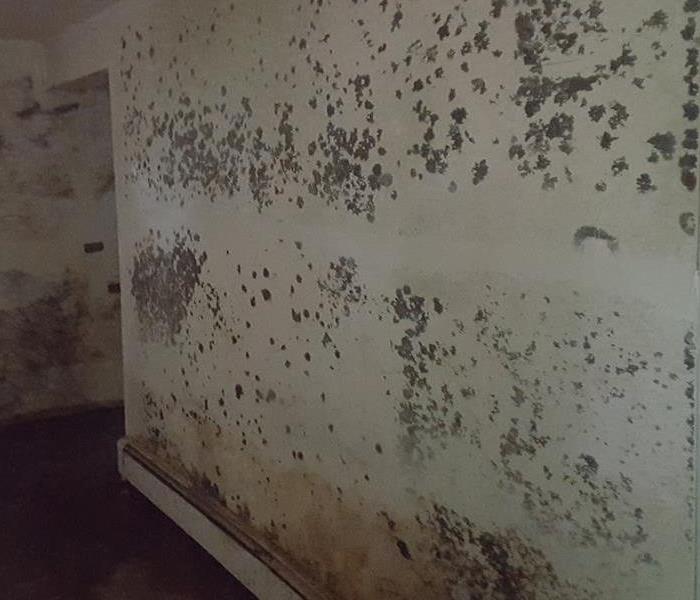Mold From the Ordinary to the Unhealthy
2/20/2020 (Permalink)
Service Technicians at SERVPRO of Southern Rockland County work hard to control and remove contaminants while protecting the health and safety of our clients and building occupants.
From the Ordinary: Fungi and mold naturally occur in our environment. In fact, over 100,000 kinds of fungi have been identified. Fungi produce some very useful results. Yeast is a type of fungi used in preparing breads, baked goods and other food products. An edible mushroom is simply a type of fungi, and lifesaving penicillin is a product of mold.
To The Unhealthy: Intrusion of water into your home or business can result in mold growth because the moisture levels inside are out of balance. Water intrusions and excessive moisture levels can result from storm damage, plumbing or equipment failures, long standing leaks, and poor humidity control. When these problems are not addressed immediately the resulting damage can present increased risk of harmful mold growth. If the humidity and moisture levels in a water-damaged environment are not promptly returned to normal, mold spores may grow and multiply. Organic materials found inside buildings such as wood, paper, drywall, and insulation provide a food sources for mold to flourish. Excessive mold growth can lead to indoor environmental conditions that can potentially pose a health threat.
Health Concerns: Health concerns may arise from excessive mold growth indoors. Concerns are more likely to arise for "at risk" people, which might include immune suppressed or compromised individuals, young children and individuals with chronic inflammatory lung diseases such as asthma and severe allergies.
SERVPRO of Southern Rockland County professionals are trained to handle various water and mold issues. Our initial focus is to stop the source of water feeding the mold. We then isolate the affected area using a negative air pressure chamber. Every mold damage scenario is different, and requires a unique solution, but the general mold remediation process stays the same.
The steps listed below illustrate our “typical” process:
- Emergency Contact
- Inspection and Mold Damage Assessment (may need to be done by an outside source)
- Mold Containment
- Air Filtration
- Removing Mold and Mold-Infested Materials
- Cleaning Contents and Belongings
- Restoration
Don't hesitate to give us a call at (845) 400-4888, we are locally owned and operated, to provide the service you expect.






 24/7 Emergency Service
24/7 Emergency Service
